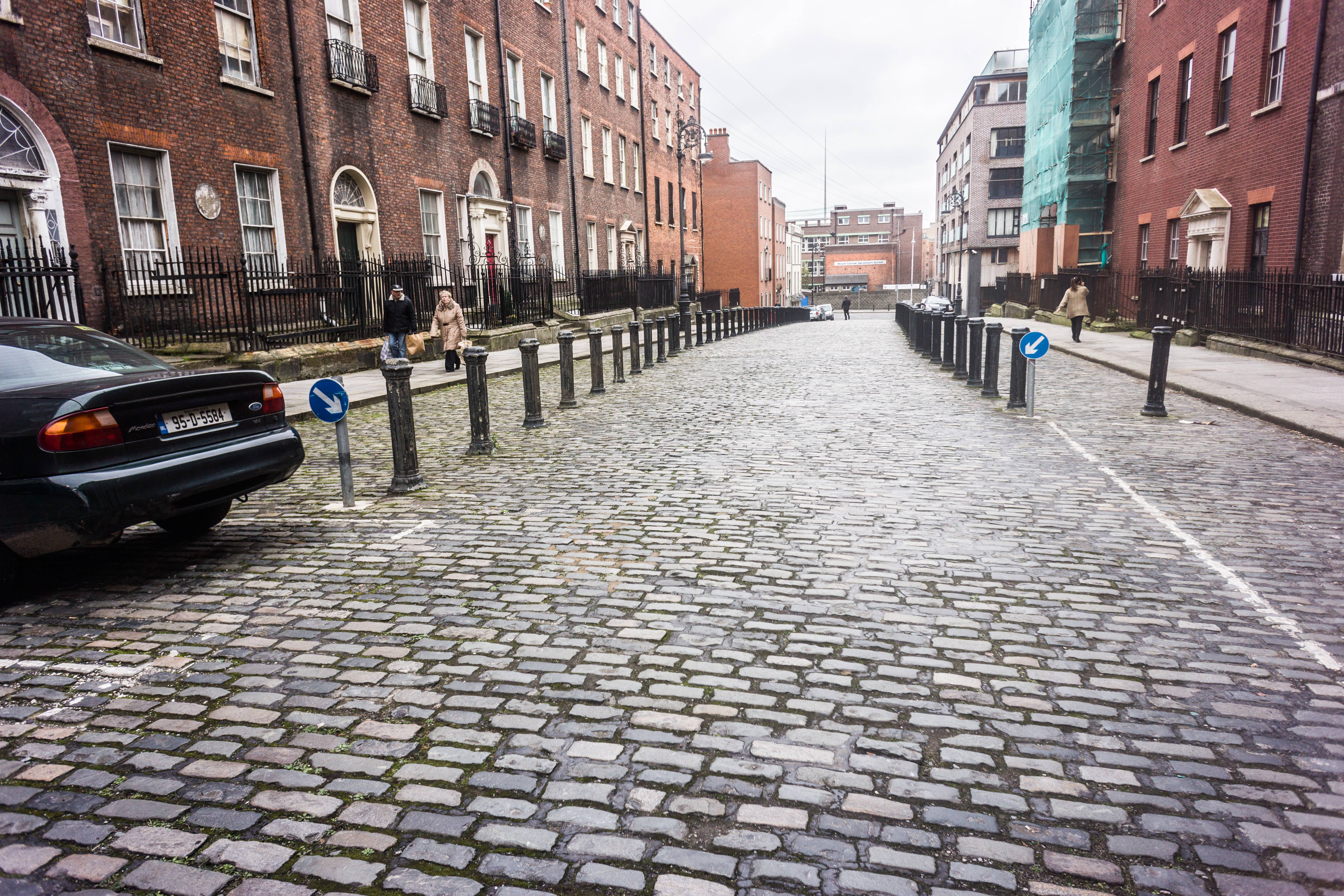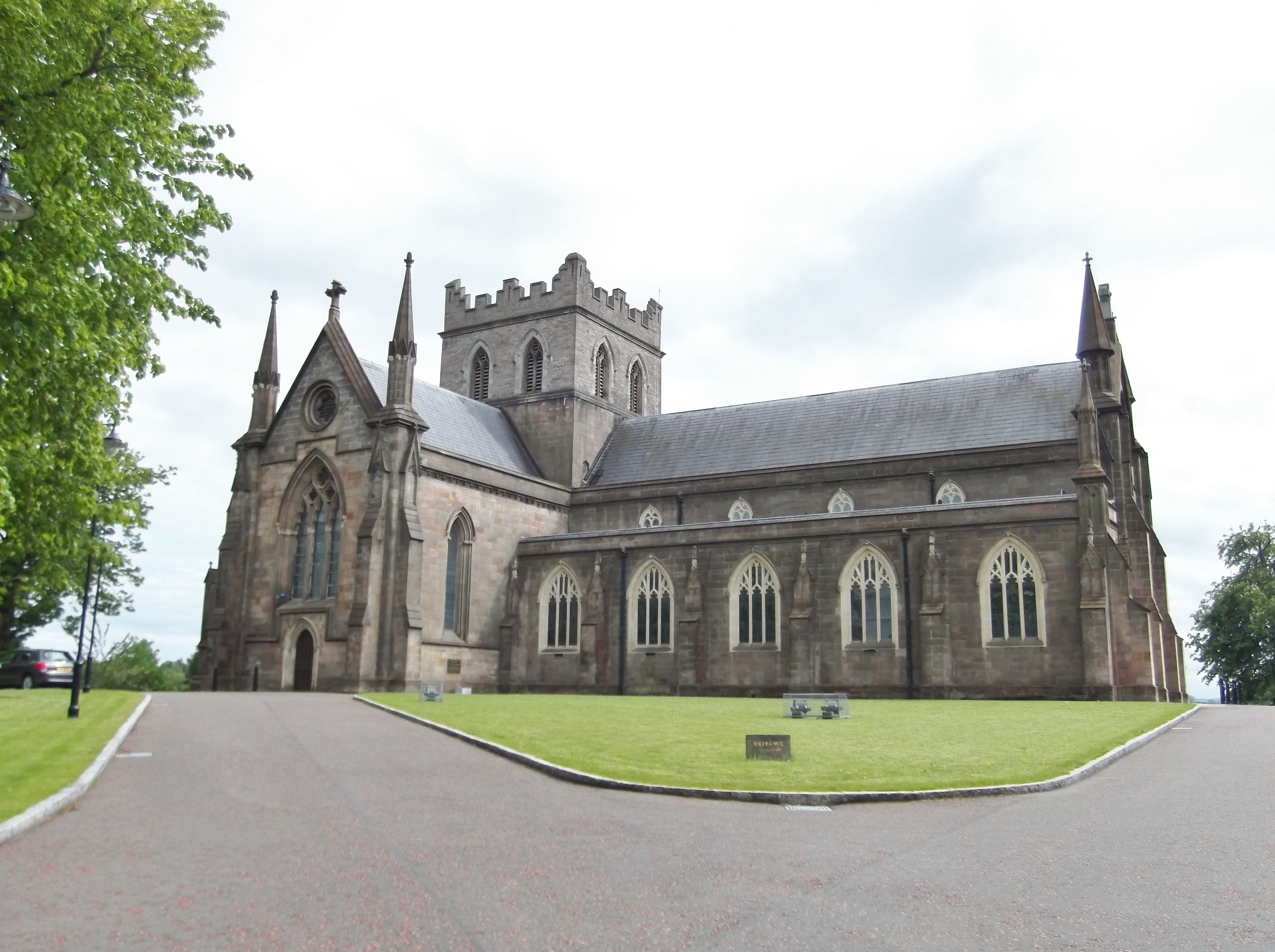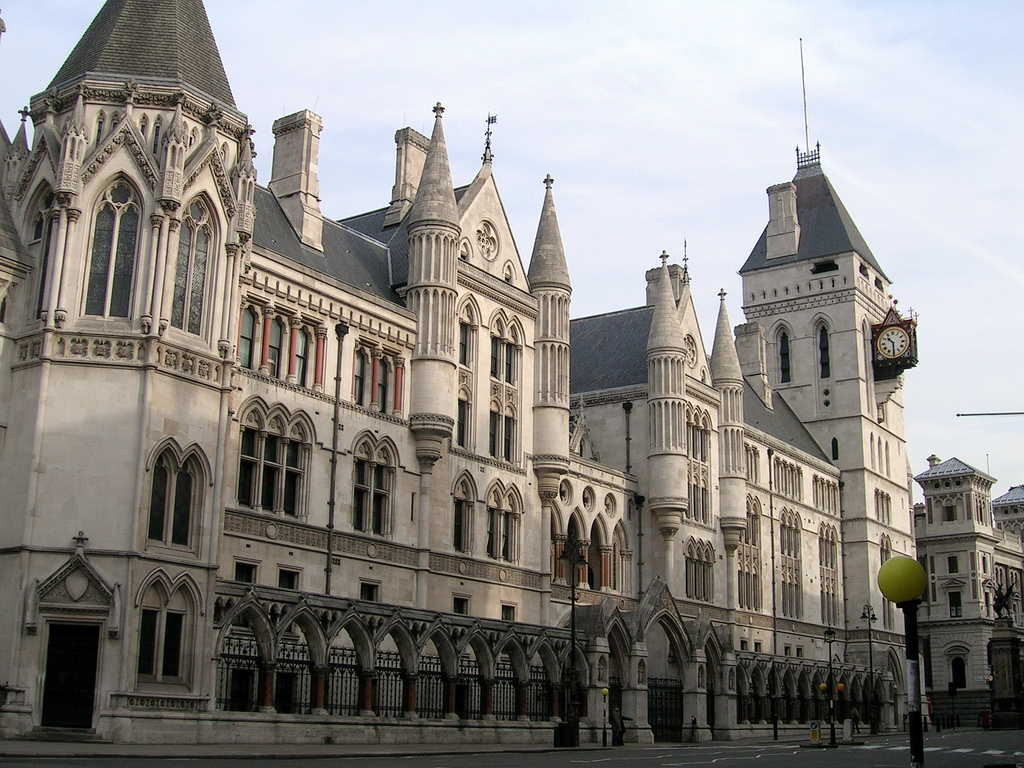|
Prerogative Court
A prerogative court is a court through which the discretionary powers, privileges, and legal immunities reserved to the sovereign were exercised. In England in the 17th century, a clash developed between these courts, representing the crown's authority, and common law courts. Prerogative courts included the Court of the Exchequer, the Court of Chancery, and the Court of the Star Chamber. Their procedures were flexible and not limited by common law procedures. The Star Chamber became a tool of Charles I employed against his enemies, and was abolished ( Habeas Corpus Act 1640) by parliament. A parallel system of common law courts was grounded in Magna Carta and property rights; the main common law courts were the Court of the King's Bench and the Court of Common Pleas. Canterbury and York The term also applied to one of the English provincial courts of Canterbury and York having jurisdiction over the estates of deceased persons. They had jurisdiction to grant probate or ad ... [...More Info...] [...Related Items...] OR: [Wikipedia] [Google] [Baidu] |
Discretionary Powers
In a parliamentary system, parliamentary or semi-presidential system of government, a reserve power, also known as discretionary power, is a power that may be exercised by the head of state (or their representative) without the approval of another branch or part of the government. Unlike in a presidential system of government, the head of state (or their representative) is generally constrained by the Cabinet (government), cabinet or the legislature in a parliamentary system, and most reserve powers are usable only in certain limited circumstances. Constitutional monarchies In constitutional monarchy, monarchies with either an Uncodified constitution, uncodified or partly unwritten constitution (such as the United Kingdom or Canada) or a wholly written constitution that consists of a text augmented by additional conventions, traditions, letters patent, etc., the monarch generally possesses reserve powers. Typically these powers are: to grant pardon; to dismiss a prime minister; ... [...More Info...] [...Related Items...] OR: [Wikipedia] [Google] [Baidu] |
Jurisdiction
Jurisdiction (from Latin 'law' and 'speech' or 'declaration') is the legal term for the legal authority granted to a legal entity to enact justice. In federations like the United States, the concept of jurisdiction applies at multiple levels (e.g., local, state, and federal). Jurisdiction draws its substance from international law, conflict of laws, constitutional law, and the powers of the executive and legislative branches of government to allocate resources to best serve the needs of society. International dimension Generally, international laws and treaties provide agreements which nations agree to be bound to. Such agreements are not always established or maintained. Extraterritorial jurisdiction is exercised through three principles outlined in the UN charter. These are equality of states, territorial sovereignty and non-intervention. This raises questions of when can many states prescribe or enforce jurisdiction. The ''Lotus'' case establishes two key rules t ... [...More Info...] [...Related Items...] OR: [Wikipedia] [Google] [Baidu] |
Dioceses Of Ireland
The History of Christianity in Ireland, pre-Reformation Christian church in Ireland was first divided into dioceses at the Synod of Ráth Breasail in 1111, although the dioceses Archbishop of Dublin, of Dublin and bishop of Waterford, Waterford were founded earlier by Hiberno Norse rulers with bishops consecrated by the Archbishop of Canterbury in England. The boundaries were reconfigured at the Synod of Kells in 1152 into 37 dioceses. A few were later abolished, as when Diocese of Glendalough, Glendalough merged Dublin in 1214–16. After the Reformation in Ireland, the established Anglican Church of Ireland was ''de jure'' the continuation of the pre-Reformation church. The Church Temporalities Act 1833 (3 & 4 Will. 4. c. 37) effected the abolition of 10 Church of Ireland dioceses by merger with neighbouring ones. Further mergers subsequently mean there are now List of Anglican dioceses in the United Kingdom and Ireland#Church of Ireland, 11 Church of Ireland dioceses in Ireland.L ... [...More Info...] [...Related Items...] OR: [Wikipedia] [Google] [Baidu] |
Dublin
Dublin is the capital and largest city of Republic of Ireland, Ireland. Situated on Dublin Bay at the mouth of the River Liffey, it is in the Provinces of Ireland, province of Leinster, and is bordered on the south by the Dublin Mountains, part of the Wicklow Mountains range. Dublin is the largest city by population on the island of Ireland; at the 2022 census of Ireland, 2022 census, the city council area had a population of 592,713, while the city including suburbs had a population of 1,263,219, County Dublin had a population of 1,501,500. Various definitions of a metropolitan Greater Dublin Area exist. A settlement was established in the area by the Gaels during or before the 7th century, followed by the Vikings. As the Kingdom of Dublin grew, it became Ireland's principal settlement by the 12th century Anglo-Norman invasion of Ireland. The city expanded rapidly from the 17th century and was briefly the second largest in the British Empire and sixth largest in Western Europ ... [...More Info...] [...Related Items...] OR: [Wikipedia] [Google] [Baidu] |
Henrietta Street, Dublin
Henrietta Street () is a Dublin street, to the north of Bolton Street on the north side of the city, first laid out and developed by Luke Gardiner during the 1720s. A very wide street relative to streets in other 18th-century cities, it includes a number of very large red-brick city palaces and Townhouse (Great Britain), townhouses of Georgian architecture, Georgian design. Name The street is generally held to be named after Henrietta (née Somerset; 1690–1726), the wife of Charles FitzRoy, 2nd Duke of Grafton, although an alternative candidate is Henrietta Paulet, Duchess of Bolton, Henrietta (née Crofts; 1697–1730), third wife of Charles Paulet, 2nd Duke of Bolton. The nearby Bolton Street is named after Paulet. History Henrietta Street is the earliest Georgian street in Dublin, and at the forefront of Georgian Dublin, Dublin's later Georgian streetscapes. Construction on the street started in the mid-1720s, on land bought by the Gardiner family in 1721. Construction ... [...More Info...] [...Related Items...] OR: [Wikipedia] [Google] [Baidu] |
Archbishop Of Armagh
The Archbishop of Armagh is an Episcopal polity, archiepiscopal title which takes its name from the Episcopal see, see city of Armagh in Northern Ireland. Since the Reformation in Ireland, Reformation, there have been parallel apostolic successions to the title: one in the Catholic Church and the other in the Church of Ireland. The archbishop of each Christian denomination, denomination also holds the title of Primate of All Ireland. In the Church of Ireland, the Archbishop of Armagh (Church of Ireland), archbishop is John McDowell (bishop), John McDowell, who is the ecclesiastical head of the Church of Ireland and the diocesan bishop of the Diocese of Armagh (Church of Ireland), Diocese of Armagh. He was elected as archbishop in March 2020 and translated to the role on 28 April 2020. In the Catholic Church, the archbishop is Eamon Martin, who is the ecclesiastical head of the Catholic Church in Ireland, metropolitan of the ecclesiastical province, Province of Armagh and the or ... [...More Info...] [...Related Items...] OR: [Wikipedia] [Google] [Baidu] |
Judicature Acts
In the history of the courts of England and Wales, the Judicature Acts were a series of acts of the Parliament of the United Kingdom, beginning in the 1870s, which aimed to fuse the hitherto split system of courts of England and Wales. The first two acts were the Supreme Court of Judicature Act 1873 ( 36 & 37 Vict. c. 66) and the Supreme Court of Judicature Act 1875 ( 38 & 39 Vict. c. 77), with a further series of amending acts (12 in all by 1899). By the act of 1873 (ss. 3, 4), the Court of Chancery, the Court of King's Bench (known as the Queen's Bench when there is a female sovereign), the Court of Common Pleas, the Court of Exchequer, the High Court of Admiralty, the Court of Probate, and the Court of Divorce and Matrimonial Causes were consolidated into the Supreme Court of Judicature, subdivided into two courts: the "High Court of Justice" ("High Court"), with (broadly speaking) original jurisdiction, and the "Court of Appeal". Besides this restructuring, the o ... [...More Info...] [...Related Items...] OR: [Wikipedia] [Google] [Baidu] |
High Court Of Justice
The High Court of Justice in London, known properly as His Majesty's High Court of Justice in England, together with the Court of Appeal (England and Wales), Court of Appeal and the Crown Court, are the Courts of England and Wales, Senior Courts of England and Wales. Its name is abbreviated as EWHC (England and Wales High Court) for legal citation purposes. The High Court deals at Court of first instance, first instance with all high-value and high-importance Civil law (common law), civil law (non-Criminal law, criminal) cases; it also has a supervisory jurisdiction over all subordinate courts and tribunals, with a few statutory exceptions, though there are debates as to whether these exceptions are effective. The High Court consists of three divisions: the King's Bench Division, the #Chancery Division, Chancery Division and the #Family Division, Family Division. Their jurisdictions overlap in some cases, and cases started in one division may be transferred by court order to a ... [...More Info...] [...Related Items...] OR: [Wikipedia] [Google] [Baidu] |
Court Of Probate Act 1857
The Court of Probate Act 1857 ( 20 & 21 Vict. c. 77) was an act of the Parliament of the United Kingdom that transferred responsibility for the granting of probate, and letters of administration, from the ecclesiastical courts of England and Wales to a new civil Court of Probate. It created a Principal Probate Registry in London London is the Capital city, capital and List of urban areas in the United Kingdom, largest city of both England and the United Kingdom, with a population of in . London metropolitan area, Its wider metropolitan area is the largest in Wester ... ( Somerset House) and a number of district probate registries. It was followed by thCourt of Probate Act 1858 both acts were repealed in 1982. Legacy Sections 70 to 80 of the act were repealed by section 56 of, and part I of the second schedule to, the Administration of Estates Act 1925 ( 15 & 16 Geo. 5. c. 23). Notes References Bibliography * Herber, Mark (2004). ''Ancestral Trails: The ... [...More Info...] [...Related Items...] OR: [Wikipedia] [Google] [Baidu] |
Court Of Probate
In the history of the courts of England and Wales, the Court of Probate was created by the Court of Probate Act 1857, which transferred the jurisdiction of the ecclesiastical courts in testamentary matters to the new court so created. The Judge of the Court of Probate also presided over the Court for Divorce and Matrimonial Causes, but the two courts remained separate entities. On 1 November 1875, under the Supreme Court of Judicature Act 1873 and the Supreme Court of Judicature Act 1875, the Judge of the Court of Probate was transferred, as its President, to the Probate, Divorce and Admiralty Division of the High Court of Justice The High Court of Justice in London, known properly as His Majesty's High Court of Justice in England, together with the Court of Appeal (England and Wales), Court of Appeal and the Crown Court, are the Courts of England and Wales, Senior Cour .... Judges of the Court of Probate * 11 January 1858: Sir Cresswell Cresswell * 3 September 1 ... [...More Info...] [...Related Items...] OR: [Wikipedia] [Google] [Baidu] |



